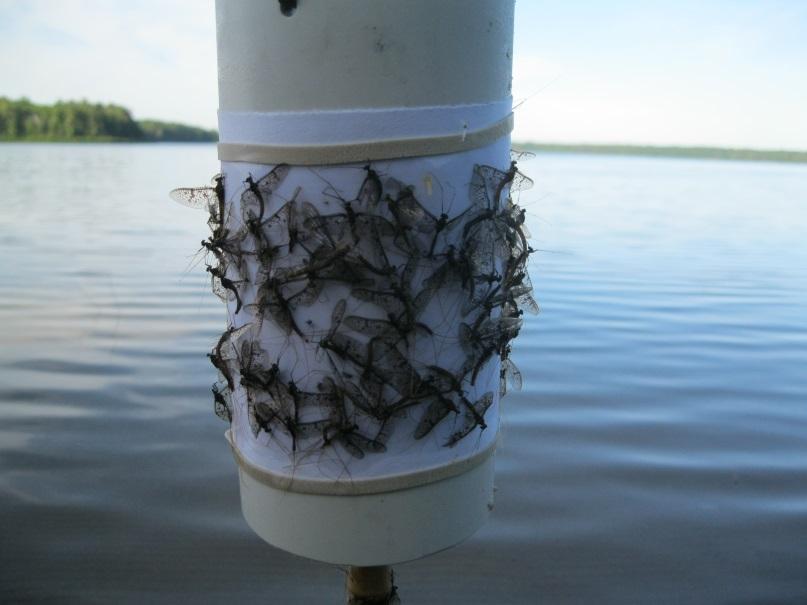Posted 01/16/14
Aerial insectivores, such as flycatchers and swallows, are among the most quickly declining avian guilds, but little is known about the causes of their decline. Paul Schilke, MS candidate in the SILVIS lab, is conducting research in northern Wisconsin to investigate how insects that live around lakes affect the birds that feed on those insects. This research will help scientists understand the causes of the decline in aerial insectivores.
The abundance of aerial insectivores, such as flycatchers and swallows, is declining across the mid-latitudes of North America, with 14 of the 18 species that breed in the boreal transition zone experiencing significant population declines, according to the North American Breeding Bird Survey. Despite this, very little research has been done to understand the underlying causes or potential solutions to the problem. Paul Schilke, graduate student in the SILVIS lab, hopes to change that.

Schilke is conducting ongoing research at several lakes in Vilas County in northern Wisconsin to begin to investigate the situation. Why start with lakes? Well, many flying insects, such as midges, dragonflies, and mosquitos, breed and live in and around lakes, so lakes can be seen as the first link in the chain that leads to the birds. If properties of the lakes are changing, due to things like climate change, acid rain, or various sources of contamination, this could affect the abundance and distribution of the insects that the birds use for food.The current goal is to fully understand the complex interrelationships between the lakes, insects, and birds. Schilke is gathering a wide range of information from the lakes, from three different sources. First, he is conducting point counts of the birds and is putting color bands on Least Flycatchers.

These methods will allow him to determine if the avian community differs near to and far from the lake, and to obtain information on sex, species, abundance and foraging preferences at several locations around each lake. Second, he has placed insect traps around and at different distances from the lakes so that insect species composition and abundance can be measured, including how the insect populations vary with increasing distance from the shore. Finally, he has recorded information about the landcover surrounding the lake, including the types of vegetation, the height of the canopy, and the foliage height diversity.One year of data collection is complete, with several more to follow. Ultimately, Schilke will be fitting statistical models that express the patterns of bird abundance and richness as functions of the insect and lake characteristics. He will then be able to identify the most important factors that relate to the distribution of avian insectivores.In the end, Schilke hopes that the greater understanding of the relationships between lakes, insects, and birds will help scientists and land managers in their efforts to conserve aerial insectivores and the complex ecosystems they rely on, and provide valuable information about the importance of subsidies from aquatic to terrestrial ecosystems.”
Story by Nicholas Keuler
